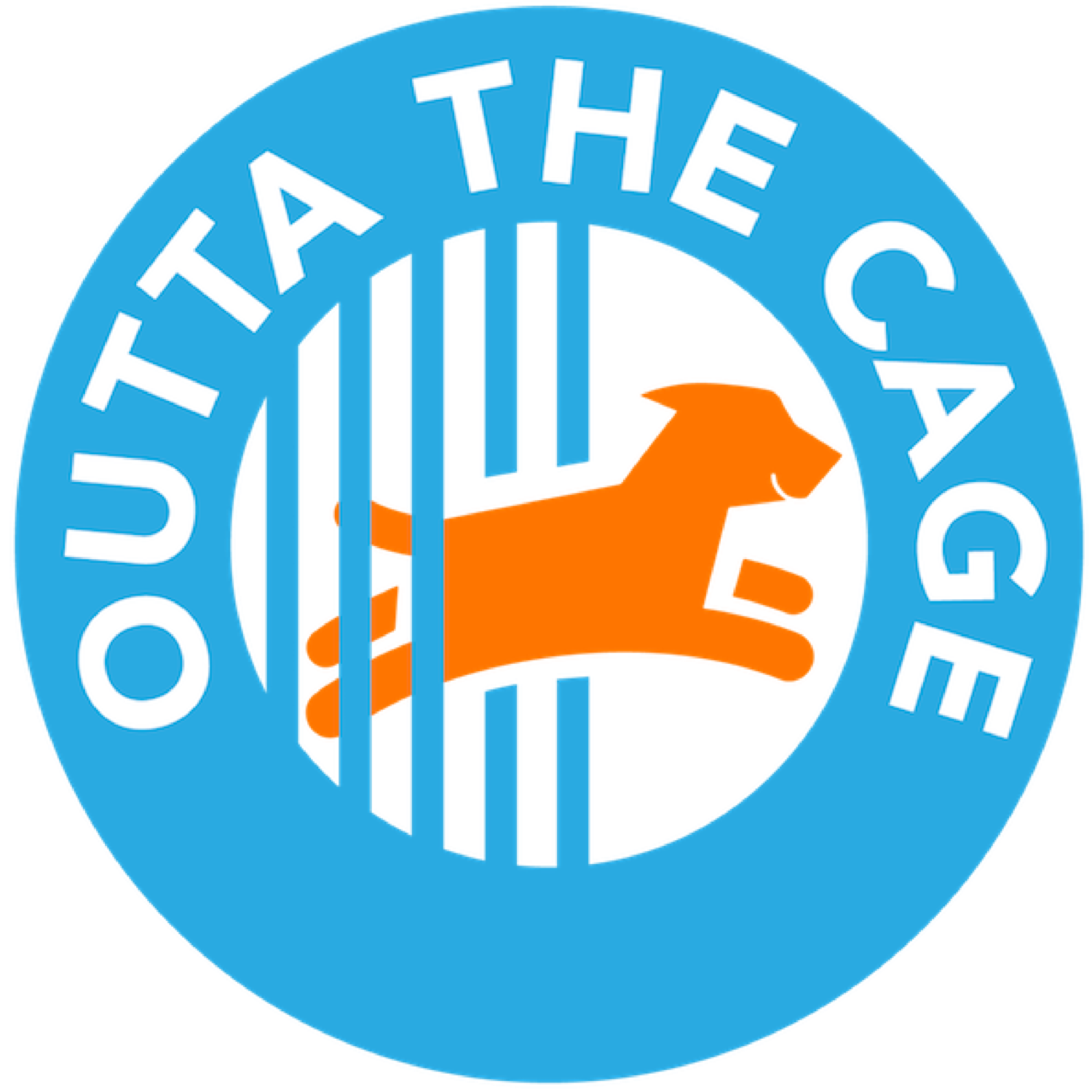
The Shelter Animal’s
Bill of Rights
In 1973, the American Hospital Association introduced a Patient Bill of Rights, outlining basic guarantees for those receiving medical care. The New York Times recently proposed a Financial Bill of Rights for various workers, including factory employees and teachers. This leads us to consider the rights of shelter animals, who often face inadequate conditions and prolonged confinement. At Outta the Cage, we witness this issue firsthand. Animals—dogs, cats, bunnies, and iguanas—deserve safe, humane living conditions that prepare them for adoption. Here is a list of 9 rights for shelter animals.
#1. The Right to Be Seen
Some shelter animals are considered “unadoptable”—breed, behavior, and fear are typical reasons. They’re warehoused in kennels away from the public. Others with chronic skin or respiratory issues are isolated in medical buildings. Many simply decay in their cages with no attention or promotion until their time is up. The outcome? Perfectly adoptable pets are often euthanized simply because they were never visible.
#2. The Right to Safety
Homeless dogs and cats are often picked up as strays. Some are starving or hurt, and others may be injured in the process of being caught. In shelters or boarding facilities, they become more susceptible to illness. These animals deserve accommodation designed to keep them safe from other animals or from human error. Shelters should also work to minimize the stress that can compromise the animals’ immune systems and their emotional wellbeing.
#3. The Right to Sustenance
Modern shelters ensure that the animals in their care receive adequate nutrition. While many shelter systems maintain budget for quality food, others accept donations from pet food companies in exchange for product promotion. Facilities short on funding might obtain low-quality pet food which could have passed its due date, or contain unnecessary fillers or potentially harmful ingredients like beet pulp, sodium nitrate, or the rendered remains of other animals. Some shelters even dispense moldy or rancid food.
In shelters where resources are scarce, animals sharing kennels or cages may fight over food risking both malnutrition and serious injury. To maintain their health homeless animals in shelter and boarding facilities should be fed healthy food on a regular schedule and should have access to fresh water at all times.
#4. The Right to Medical Intervention
Wherever animals who have not received care congregate, the risk of illness increases. Fleas, upper respiratory tract infections, skin conditions, or viruses can move quickly between kennels and even across species. In these and other cases, shelters should be able to provide access to veterinary care. Indeed, the ability to provide timely care should be a prerequisite for housing animals.
#5. The Right to Physical Activity
The more densely packed the shelter, the less likely it is that its animals will receive regular activity. Data shows that there is a direct correlation between exercise and good behavior in animals.
Modern shelters have introduced play groups or animal enrichment activities that keep animals’ bodies in motion and their brains engaged. Shelters with active volunteer squads ensure a regular schedule of play yard visits or property walks. Many support weekend fosters or “hound on the town” field trips to ensure animals learn social skills with humans and other animals.
Dogs and cats living in cages become less adoptable over time. Even those in good health are often euthanized simply to free up space.
#6. The Right to Representation
Many of us have seen the same barky German Shepherd or sullen black bully breed at a shelter week after week. Has anyone noticed the dog? What we don’t see is the shelter staff member who will walk the dog after hours, or the volunteer who advocates against putting the dog down because he’s finally getting the hang of obedience training.
Every animal in a shelter should have an advocate. Whether it’s someone who works at the shelter, someone who visits shelter animals to photograph or video them, or people on social media who share these images with their friends, animals with advocates have an increased chance of making it out of the shelter and into loving homes.
#7. The Right to Be Left Alone
The problem is usually that shelter animals don’t get enough activity or attention. However, in some shelters the opposite problem of too much stimulation can also affect adoptability. Other animals passing close to their kennels, children sticking fingers in cages, the constant barking of dogs in distress, and even shelter workers who unwittingly provoke the animals can cause behavior and even health issues. Modern shelters have designed smaller kennel buildings with larger indoor-outdoor kennel spaces to allow animals to escape the monotony of life in a cage. Many pipe in music and provide soft bedding to ensure their comfort.
#8. The Right to Be Free from Suffering
Whether an animal enters a shelter with a wound, contracts an illness upon arrival, or injures itself due to kennel stress, it deserves immediate care. Regardless of whether the suffering is physical or emotional, even small, incremental changes can make a difference in an animal’s wellbeing. Some shelters have set up regular wellness visits with in-house veterinarians whether are not there are observable health issues. These visits are often as much about mental enrichment as they are about physical health. Other programs like the aforementioned play groups and regular obedience training sessions can make a difference in an animal’s depression. Many shelters have begun programs in which school children read to animals in their kennels, making them more comfortable with humans.
#9. The Right to Die Painlessly
Sometimes it’s simply too late. An animal’s injuries are too severe or behavior issues risk safety or consume too many resources—taking them away from healthy, adoptable pets. In cases like these, euthanasia is often the kindest option.
Sadly, shelter euthanasia is often as stressful as shelter living. A dog is removed from its kennel with a catch pole, muzzled, and—struggling—led or dragged to the back room where it is forcibly restrained.
Modern shelters can remedy this by sedating the animal, taking it to an outside yard or space, letting it spend some time, and euthanizing it once it is resting. There are actually kindhearted volunteers who will assist in this process, comforting the animal before and during the procedure.
